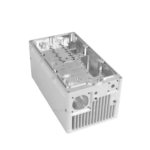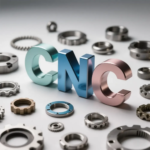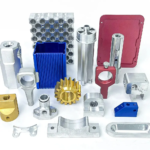The high-precision double-sided grinding machines have become increasingly important in various industrial applications, from aerospace and automotive to medical and semiconductor industries. To optimize the performance of these machines, it is crucial to follow a structured approach that involves design, installation, adjustment, and maintenance strategies. In this article, we will explore the key factors to consider and the best practices for optimizing the performance of high-precision double-sided grinding machines.
### Identifying the Requirements
Before optimizing the performance of a high-precision double-sided grinding machine, it is essential to identify the specific requirements of the process. This includes understanding the production volume, material being processed, and the required surface finish. Additionally, it is necessary to familiarize yourself with the machine’s specifications, such as the type of grinding abrasive, wheel speed, and feeding rate.
### Selection of Grinding Abrasive
The selection of grinding abrasive is critical for optimal performance. The abrasive must be able to effectively remove material while minimizing the risk of overheating, vibration, and chatter. The type of grinding abrasive required will depend on the material being processed, with ceramic and diamond abrasives being commonly used for hardened steels, and aluminum oxide and silicon carbide being suitable for softer materials.
### Proper Wheel Dressing
Proper wheel dressing is essential for maintaining consistent surface finish and ensuring the grinding process operates efficiently. The dressing process involves removing the worn-out abrasive and reprofiling the grinding wheel to ensure a sharp, even cutting edge. Regular wheel dressing can help prevent overheating, reduce vibration, and improve the surface finish.
### Feeding System
The feeding system is responsible for transporting the workpiece through the grinding process. A well-designed feeding system can help maintain consistent grinding pressure, reduce vibration, and improve surface finish. The feeding system should be designed to accommodate the material being processed, with the type of feeding system varying depending on the material’s size, shape, and density.
### Coolant System
A well-designed coolant system is critical for maintaining a consistent grinding process. The coolant should be able to effectively remove heat, debris, and vibration, reducing the risk of overheating and improving the surface finish. The coolant system should be designed to accommodate the grinding process, with factors such as flow rate, type of coolant, and pressure play a crucial role in the overall performance.
### Vibration Control
Vibration is a common issue in high-precision double-sided grinding machines, and it can significantly impact the performance and surface finish. To control vibration, it is essential to design the machine with anti-vibration components, such as dampeners and mounts, and to maintain regular maintenance to prevent excessive vibration. Additionally, the workpiece should be properly secured to the machine during the grinding process to prevent movement and vibration.
### Regular Maintenance
Regular maintenance is crucial for optimal performance and longevity of high-precision double-sided grinding machines. Regular cleaning, lubrication, and inspection should be performed to identify and address any potential issues before they become significant problems. Additionally, regular wheel dressing and dressing tool maintenance can help prevent downtime and improve surface finish.
### Advanced Technologies
The use of advanced technologies, such as automation, computer numerical control (CNC), and sensor integration, can help optimize the performance of high-precision double-sided grinding machines. These technologies can improve accuracy, precision, and surface finish, reduce production time, and increase efficiency. For instance, CNC machines can be programmed to optimize the grinding process, minimizing the risk of human error and improving consistency.
### Future Outlook
As the demand for high-precision surface finish and quality continues to increase, the importance of optimizing the performance of high-precision double-sided grinding machines will only continue to grow. By understanding the key factors that impact performance and following best practices, manufacturers can ensure optimal performance and longevity of these critical machines.
In conclusion, optimizing the performance of high-precision double-sided grinding machines requires a structured approach that involves design, installation, adjustment, and maintenance strategies. By identifying the requirements, selecting the right grinding abrasive, proper wheel dressing, feeding system, coolant system, vibration control, regular maintenance, and advanced technologies, manufacturers can ensure optimal performance and surface finish. As technology continues to advance, it is essential to stay up-to-date with the latest trends and best practices to maintain a competitive edge in the industry.
### Achieving Optimal Surface Finish
Achieving optimal surface finish is critical for many industries, including aerospace, automotive, and medical. High-precision double-sided grinding machines are designed to produce surface finishes that meet the tightest tolerances and requirements. By optimizing the performance of these machines, manufacturers can achieve surface finishes that meet the required specifications, ensuring the production of high-quality products that meet the industry standards.
### Overcoming Challenges
High-precision double-sided grinding machines can be complex and challenging to operate, requiring a high degree of expertise and knowledge. Overcoming these challenges requires a deep understanding of the machine’s capabilities, limitations, and requirements. By identifying the key factors that impact performance and following best practices, manufacturers can overcome the challenges and achieve optimal results.
### Conclusion
Optimizing the performance of high-precision double-sided grinding machines is crucial for achieving optimal surface finish, meeting industry standards, and reducing production time. By understanding the key factors that impact performance and following best practices, manufacturers can ensure optimal performance and longevity of these critical machines. In this article, we have explored the key factors to consider and the best practices for optimizing the performance of high-precision double-sided grinding machines, providing a comprehensive guide for manufacturers and operators. By implementing these strategies, manufacturers can overcome the challenges and achieve optimal results, ensuring the production of high-quality products that meet the industry standards.
Daguang focuses on providing solutions such as precision CNC machining services (3-axis, 4-axis, 5-axis machining), CNC milling, 3D printing and rapid prototyping services.









